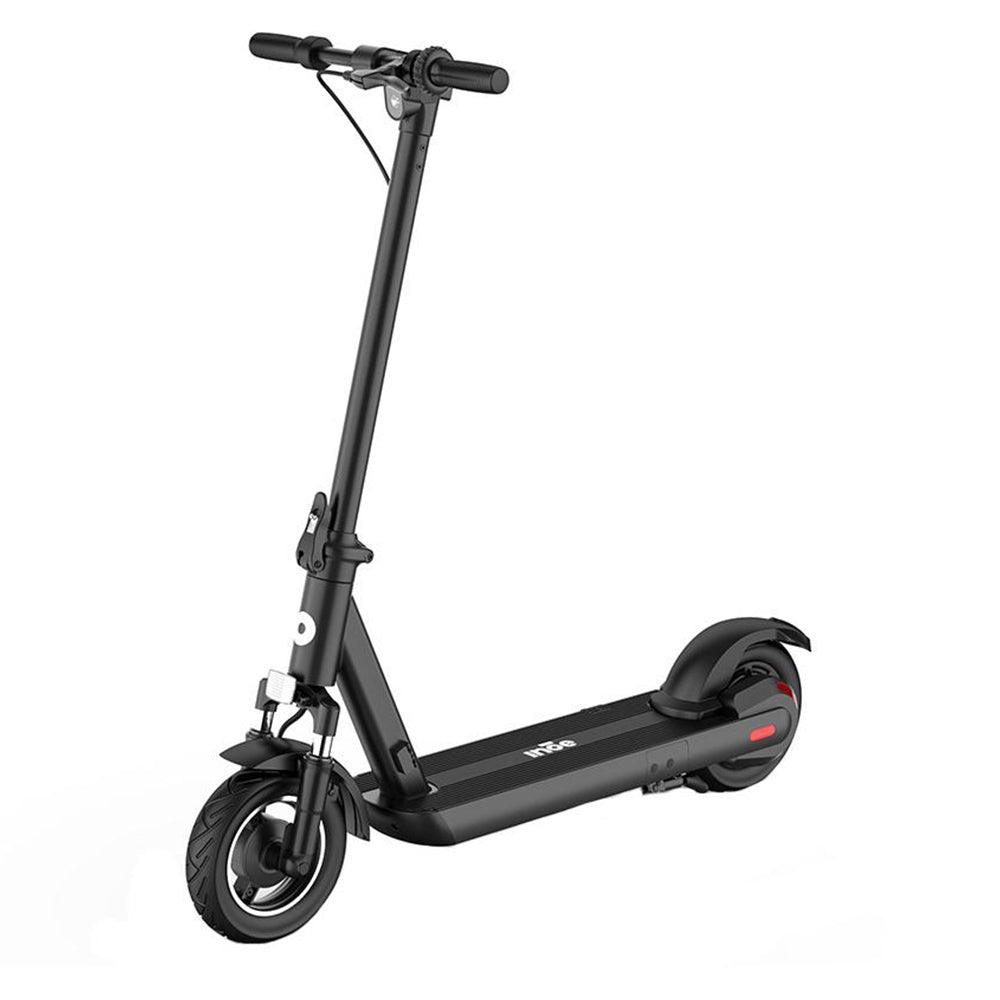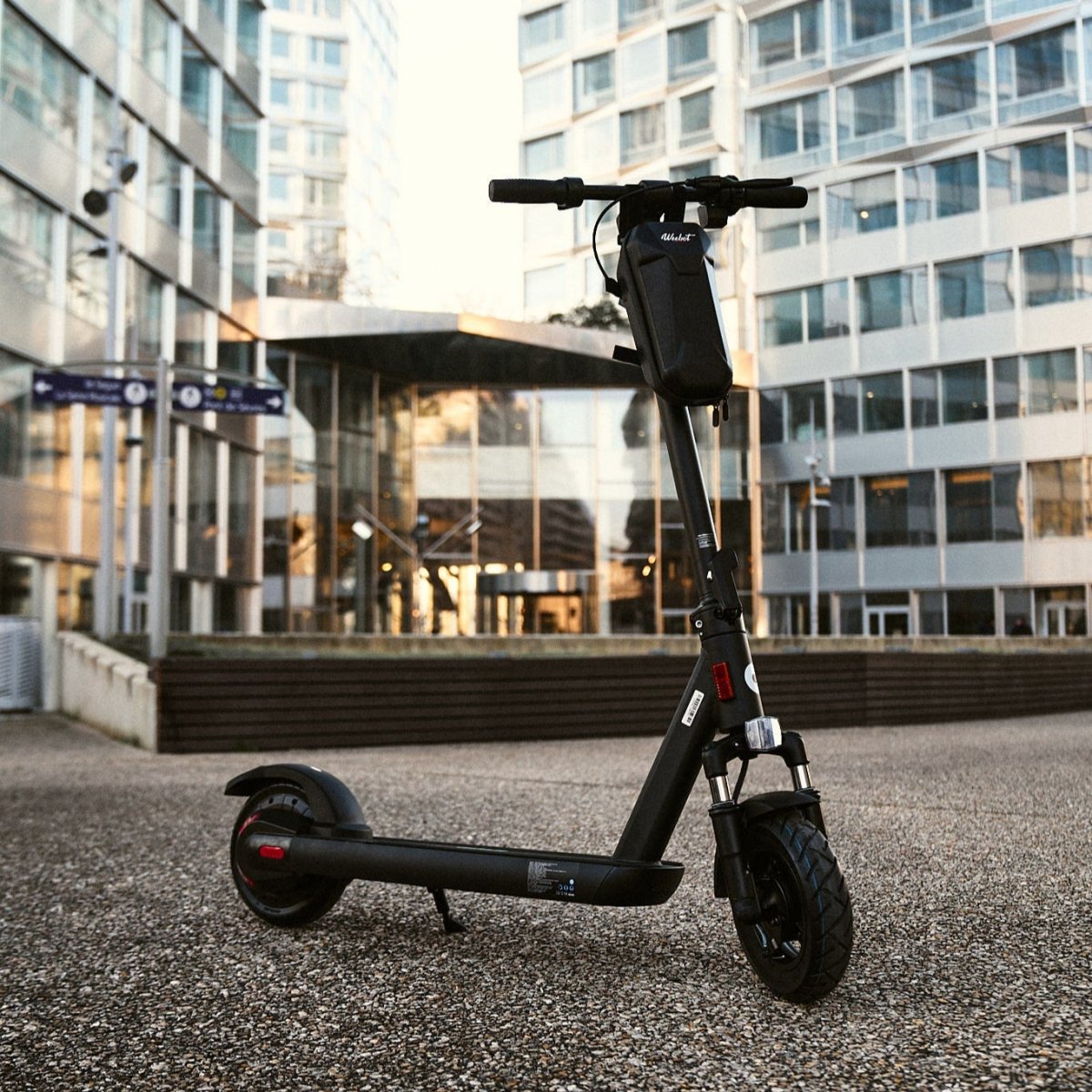Have you ever wondered who came up with the idea of motorizing a scooter? Today, the electric scooter is an integral part of the daily lives of millions of city dwellers, making urban travel easier while reducing the carbon footprint. In this article, we take you on a journey through the history of the electric scooter, from its early drafts in the 19th century to the ultra-modern models we see today on our roads. Whether you are simply curious or passionate about urban mobility, discover who invented the electric scooter?
The origins of the scooter
Before becoming the vehicle we know today, the electric scooter went through many stages of transformation. From a simple toy for children to a vehicle designed for the road, it came to life thanks to visionary inventors. Let's dive into the history of the electric scooter!

The first non-motorized models
Before invading the roads and long before the emergence of major brands such as Minimotors, Kaabo, Ninebot, or Weebot, the scooter was initially considered a toy for children. From the early 20th century, children used wooden boards mounted on wheels with a vertical bar for steering. Simple and effective, it was popular in playgrounds and parks. Although rudimentary, it laid the groundwork for future scooters.
However, at this stage, these models did not have engines and were far from being vehicles for adults. The idea of motorizing the scooter would soon take root in the minds of some visionary inventors.
The birth of the motorized scooter
The major turning point in the history of the scooter comes in 1895 with the appearance of the first motorized scooter. This revolution is initiated by Ogden Bolton Jr., an American inventor who will quickly file a patent for his creation. His invention, powered by a combustion engine and not electric, is nevertheless considered the ancestor of the electric scooter.
The characteristics of the invention of Ogden Bolton Jr.
The patented model by Ogden Bolton stands out for its avant-garde design. Designed based on a bicycle, the machine features a central deck allowing the user to stand. A design that closely resembles modern electric scooters. The motor, located on the rear wheel, allows the vehicle to be propelled effortlessly; a major innovation for its time.

Even if this model was not strictly electric, it laid the groundwork for what is today called a "personal mobility device" (PMD). Its concept inspired future models of motorized scooters and paved the way for the advent of electric scooters several decades later.
Why is Ogden Bolton considered the great creator of the electric scooter?
Ogden Bolton is often presented as the inventor of the motorized scooter and, by extension, as one of the pioneers of the electric scooter. This status is attributed to him because his concept influenced many subsequent innovations in the field of motorized personal transportation devices (MPDs).
Indeed, if his vehicle was not powered by an electric battery, he demonstrated the potential of motorized scooters as a practical and efficient means of transportation. This concept will be revisited and refined over the decades to become the modern electric scooters we use today.


The invention of the very first electric scooter
The invention of the first electric scooter marks a turning point in the history of urban mobility. Thanks to the genius of Arthur Hugo Cecil Gibson, the scooter evolves from a simple toy to a true means of transportation, laying the groundwork for modern models.
The invention of the autoped by Arthur Hugo Cecil Gibson
In 1915, the history of the scooter saw a major advancement with the invention of the autoped by Arthur Hugo Cecil Gibson. Considered by many as the first electric scooter, the autoped played a key role in the evolution of EDPM.

This revolutionary invention, patented by Cecil Gibson, offered something unique for its time: a motorized scooter available in two versions, one running on gasoline and the other on electricity. This model was designed not only to facilitate urban mobility but also to provide a compact and accessible transportation solution.
The characteristics of the scooter
The scooter has characteristics that are similar to modern scooters:
● A foldable design: A feature that made it easier to store the scooter. A brilliant idea that still inspires today's foldable electric scooters.
● A maximum speed of 30 km/h: For the time, reaching such a speed on an EDPM was a real feat.
● Innovations in safety: The scooter was already equipped with brakes, headlights, and sound signals.
The years of transition and new inventions
Between 1930 and 1990, the scooter underwent a discreet but significant transformation. From a toy for children to an urban vehicle, this period saw the birth of revolutionary concepts championed by geniuses like Roland Puisset and Wim Ouboter.
The beginnings of the modern scooter (1967)
In 1967, Roland Puisset designed one of the first sketches of the modern scooter. Despite avant-garde plans, commercial success was not achieved. However, these concepts influenced future models of freestyle scooters and contributed to the evolution of mobility devices.

The reinvention by Wim Ouboter and the launch of the Kickboard (1990)
The real turning point occurs in 1990 thanks to Wim Ouboter, a Swiss inventor. He designs the Kickboard, a model of light electric scooter that restores the scooter's nobility. Unlike toys for children, the Kickboard is designed for adults and teenagers, which rekindles public interest.
The success of the Kickboard marks the beginning of Micro-Mobility and lays the foundations for the electric scooter market. By facilitating motorized personal transportation, it becomes a true means of transport in the city.
The resurgence of electric scooters
The resurgence of electric scooters marks the beginning of a revolution in the sector. From Razor's foldable models to the connected scooters from Xiaomi and Ninebot, the electric scooter is establishing itself in micro-mobility thanks to the advent of rental services and technological advancements.
The Golden Age of Folding Scooters (2000s)
The early 2000s mark a major turning point in the history of the scooter. The brand Razor popularizes foldable electric scooters, which achieve tremendous success among children and teenagers. This commercial success lays the groundwork for the evolution towards modern electric scooters.
At the same time, Wim Ouboter becomes a central figure in the revival of the scooter. His flagship model, the Micro Mobility, rekindles urban dwellers' interest in EDPs. An innovation that promotes the rise of foldable electric scooters as we know them today.
The emergence of modern electric scooters (2010s)
The 2010s saw the arrival of modern electric scooters on the market, thanks to brands like Minimotors, Weebot, Xiaomi, and Ninebot. These manufacturers are revolutionizing the sector by offering high-performance, compact models that are accessible to a wide audience. The major innovation of this period: the adoption of lithium-ion batteries. They provide more range and a reduced charging time.

This phenomenon has transformed the approach to urban mobility, particularly in urban areas, where scooters have become an increasingly popular alternative to cars. The rise of these brands is part of a broader dynamic of transition towards sustainable modes of transport, aimed at reducing congestion and the carbon footprint of cities.
Electric scooters today
Electric scooters have become essential in cities. Popular for their practicality and durability, they are fully part of the micro-mobility dynamic. However, this popularity also raises issues in terms of regulation and road safety.
A rapidly growing market
Modern electric scooters have established themselves as an essential means of transportation. With the rise of micro-mobility, the electric scooter market has never been more popular. Sales are booming, driven by urban dwellers' enthusiasm for these fast and eco-friendly machines.

The importance of safety rules
With the increase in electric scooter users, road safety issues are more important than ever. Authorities have established strict rules, including wearing helmets for those under 12 years old and adhering to the Highway Code. These vehicles must also travel on bike lanes, which limits conflicts with pedestrians and cars.
FAQ
1. What are the current regulations regarding the use of electric scooters?
With the increase in the number of electric scooter users, several countries and cities have implemented regulations to ensure road safety. This includes the requirement for minors to wear helmets, riding only on bike lanes, and speed restrictions. Some cities also impose special parking zones for shared scooters to avoid congestion on sidewalks.
2. What is the difference between electric scooters and traditional scooters?
Electric scooters differ from classic models mainly due to the addition of an electric motor, which allows the user to move without effort. While classic scooters require manual propulsion by pushing, electric models enable longer distances to be covered more quickly and with less physical effort.
3. Are electric scooters a sustainable transportation solution?
Yes, electric scooters are part of the transition to more ecological and sustainable means of transport. As clean and compact vehicles, they help reduce CO2 emissions and decrease urban congestion. They provide an efficient alternative to traditional vehicles for short trips in the city.
Conclusion
"After a journey into the heart of the history of the electric scooter, it is clear that it has come a long way. From the visionary idea of Ogden Bolton to the iconic autoped model designed by Arthur Hugo Cecil Gibson, through the revolution of Wim Ouboter's Kickboard, each invention has contributed its stone to the edifice of modern electric scooters."
Today, the electric scooter is an essential means of transport for millions of users around the world. Compact, eco-friendly, and efficient, it meets the needs of riders and stands out as a preferred alternative to traditional vehicles.
Want to test the latest scooters on the market? Discover our catalog on Weebot!

